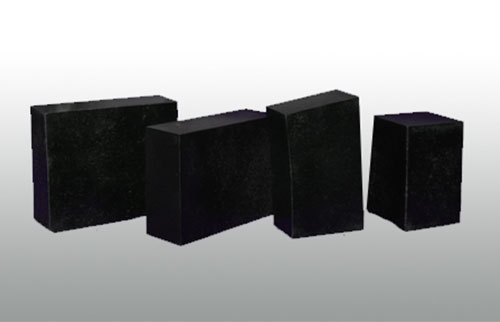There are two methods to make magnesia carbon brick, one is burning oil impregnated magnesia carbon brick, the other is not burning magnesia carbon brick. The former brick making process is relatively complex and rarely used. This paper only briefly describes the brick making process characteristics of unburned magnesia carbon brick. Tubular magnesia brick
Preparation of slurry. It is important to choose the critical size of particles in seed matching. The refinement of aggregate particles can reduce the open porosity and enhance the oxidation resistance. However, small aggregate particles will increase the closed pores and decrease the bulk density. In addition, fine-grained MgO aggregate is easy to react with graphite, and it is generally considered that the particle size of 1mm is appropriate. Under the condition of high pressure forming equipment, the particles of magnesia tend to be fine. In order to improve the density of firebrick, many factories use the particle diameter of more than 5mm.

The quality and quantity of graphite added to the ingredients is crucial. Generally speaking, increasing the graphite content in refractory bricks will improve the slag resistance and thermal shock stability of the refractory bricks, but the strength and oxidation resistance will decrease. If the carbon content in the magnesium carbon bricks is too small (<10%), If the network skeleton cannot be formed in the refractory bricks, the advantages of carbon cannot be exerted effectively. Therefore, the carbon content is more suitable in the range of 10-20%.
In the process of mixing, in order to uniformly surround the graphite around the magnesia particles, the feeding order should be: magnesia particles → binding agent → graphite → magnesia fine powder and additive powder. Because the graphite content is large, the density is small, and the dosage is very small, it takes a long time to mix uniformly. However, if the mixing time is too long, the graphite and fine powder around the magnesite particles will fall off, so the mixing time should be appropriate.
The molding of magnesia-carbon brick is an important factor to densify the structure of refractory bricks: due to the large amount of graphite in the mud and the small critical grains of the aggregate, it is appropriate to use high-pressure molding and strictly follow the operation of light first and then heavy, and multiple pressures Procedures are pressed to avoid forming cracks. Use vacuum, exhaust and pressurize the operating procedures. In addition, the surface of the high-pressure formed brick is very smooth, and it is easy to slide during transportation and building. Therefore, the formed brick must be impregnated or coated with a 0.1 to 2 mm thick thermosetting resin to form a resin film to prevent sliding. This treatment is generally referred to as a non-slip treatment.
The formed Mg-C brick must be hardened before it can be used. The temperature of the hardened treatment has a great influence on the performance of the refractory brick. It has been proved by research that the hardening treatment at 200-250 ° C is more suitable for ensuring the bulk density of the bricks and reducing the porosity, etc. There are women's places. Above 250 ° C and below 200 ° C, the hardening treatment will bring adverse effects. It is necessary to strictly lift the air. Usually at 50-60 ° C, due to the softening of the resin, it should be properly insulated; at 100-110 ° C, due to the large amount of solvent discharged, it should be insulated; at 200-250 ° C, it should also be properly insulated to complete the reaction.